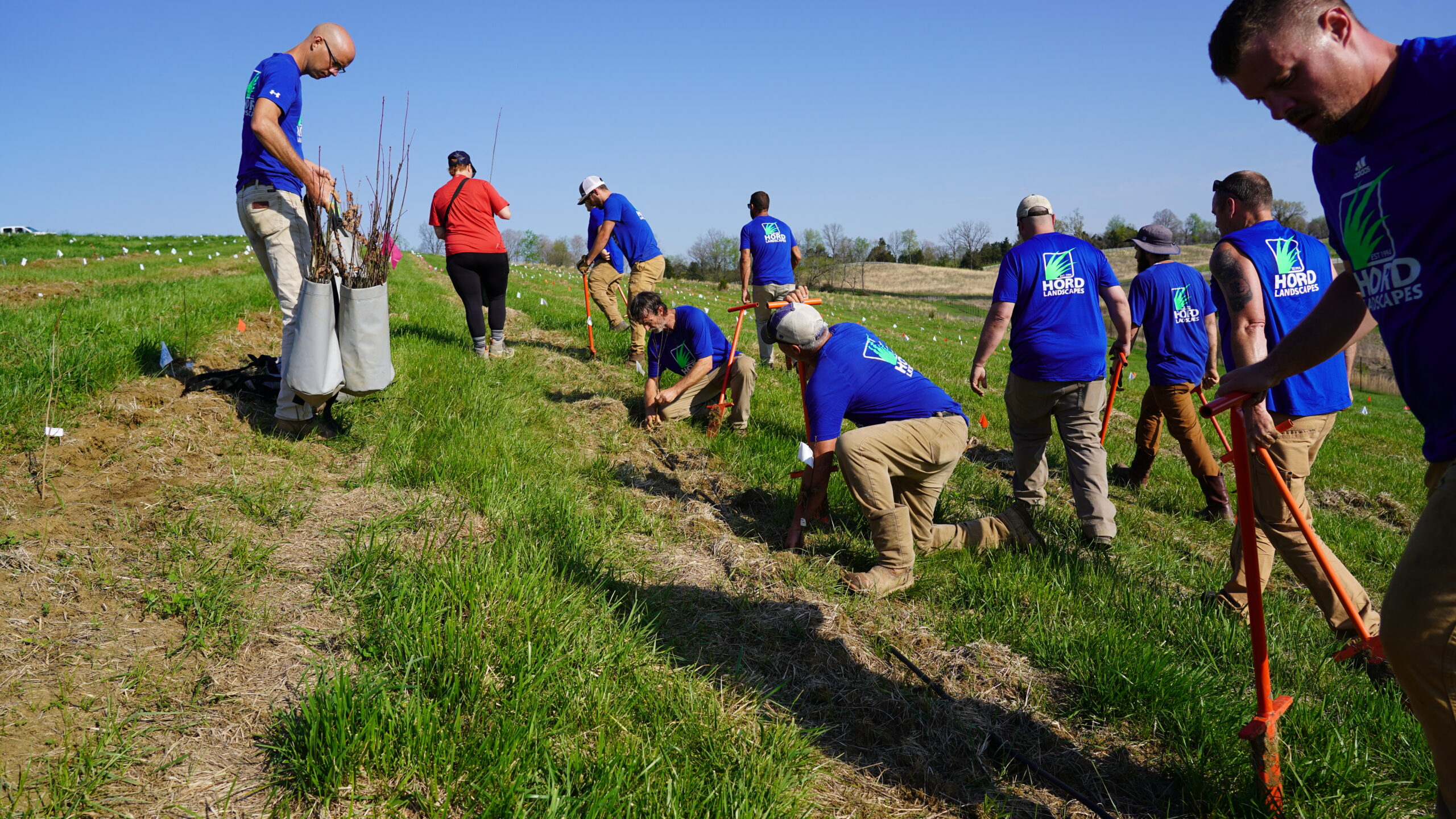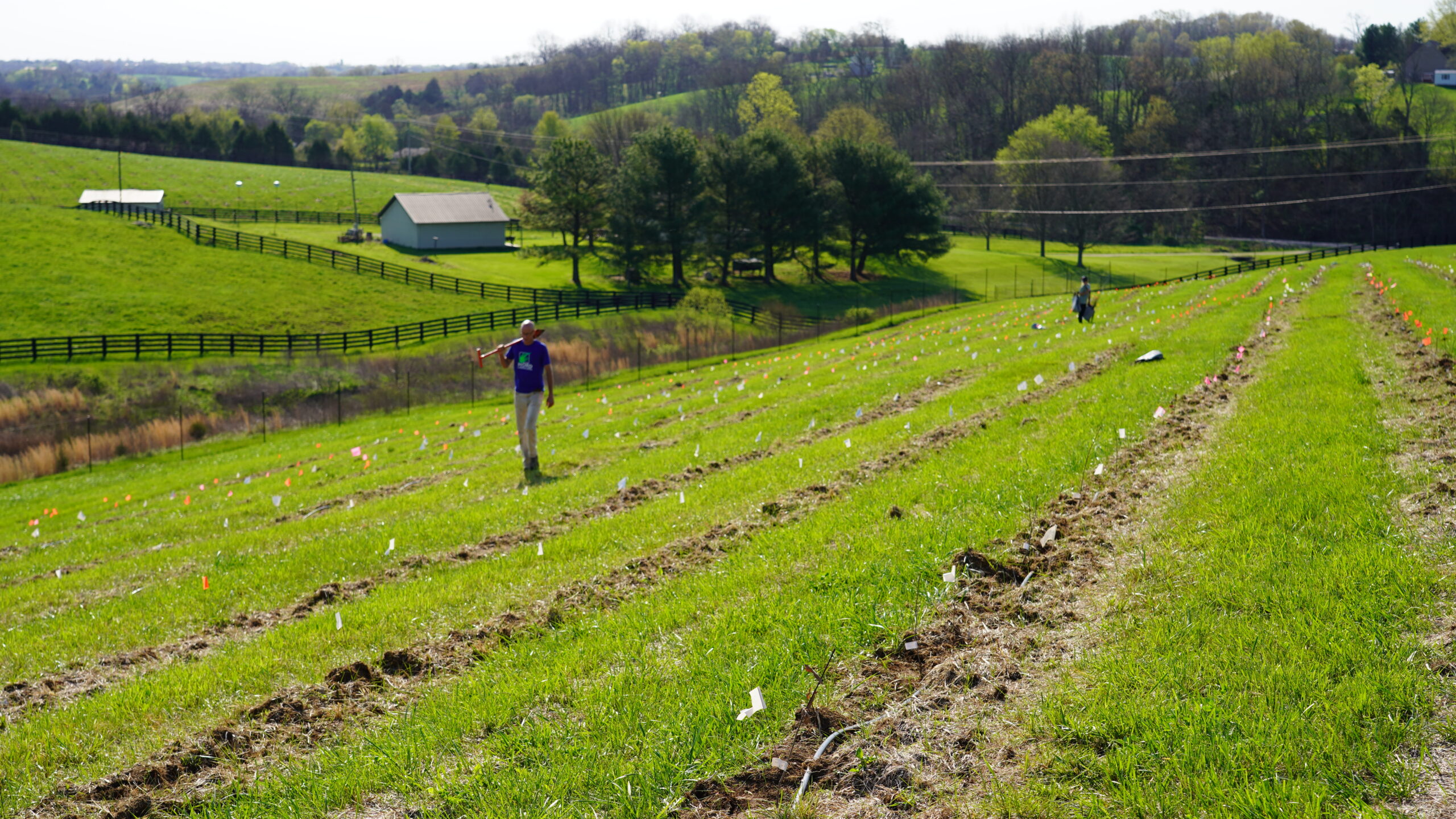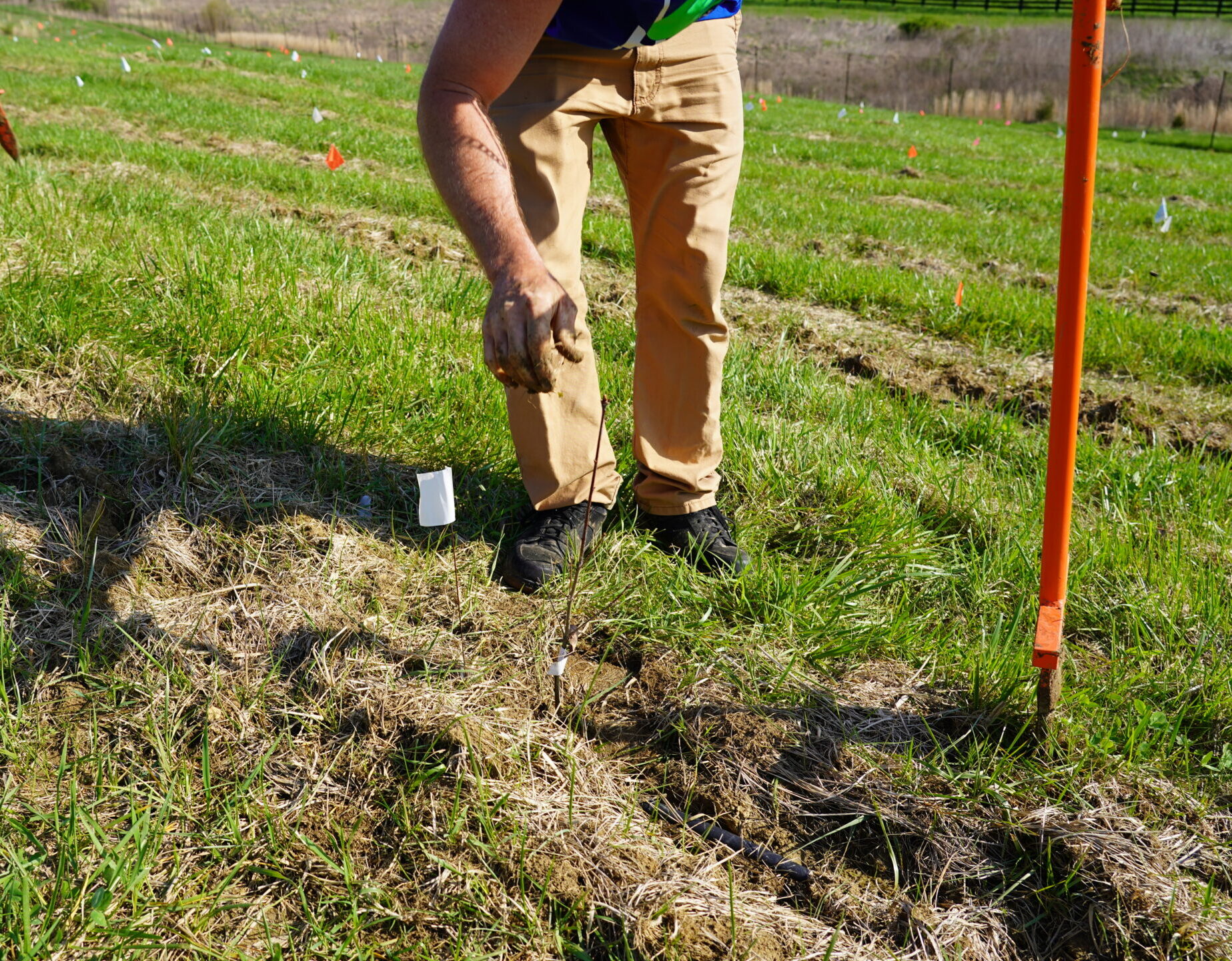
What if Johnny Appleseed was a bourbon drinker?
If so, he might have planted a few oak trees along his journey. Thankfully, we’ve got researchers from the University of Kentucky and Maker’s Mark team members out there planting trees for the future of bourbon.
In honor of Earth Day this month, crews recently planted 2,000 additional white oak tree seedlings at Star Hill Farm, Maker’s Mark’s home in Loretto, Kentucky. There are now more than 10,000 young trees growing on what the distillery calls “the world’s largest oak-tree research depository” on 25 acres.
The project studies the resiliency of various white oak tree species, along with which ones do the best job when it comes to bringing flavor to bourbon while it’s aging in the barrel.
“Maker’s Mark’s commitment to sustainability is exemplified by two other projects already carried out in 2024:
- Expanding the solar array built by Kentucky Utilities which powers the brand’s rickhouses located in Loretto. Ground has also been broken on distillery property for a larger solar array that will be completed later this year.
- A soil health conference on regenerative farming, attended by some 30 local farmers who supply wheat and corn to the distillery.”
(Source: Maker’s Mark)
“Bourbon is nature distilled. So, it’s incumbent upon us to protect the environment that gives us the ingredients for bourbon. That’s what this project is about – gaining more knowledge of white oaks so that all of us in the bourbon industry can work better with nature now and into the future. This is a dream project. The plan is for this research to continue for a hundred years or more into the future. And that’s the beauty of the relationship UK has with Maker’s Mark. It’s a shared vision of protecting nature.”
Rob Samuels, Managing Director of Maker’s Mark and eighth-generation distiller.





